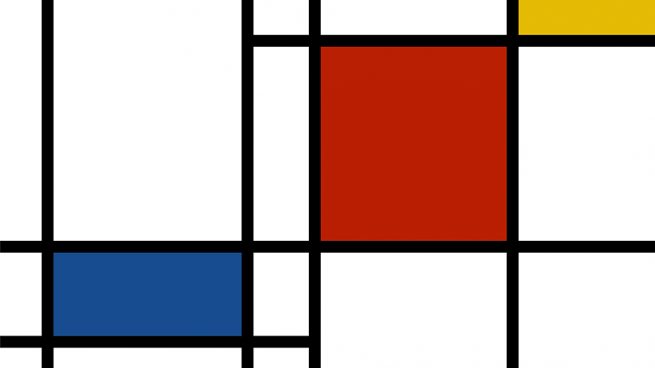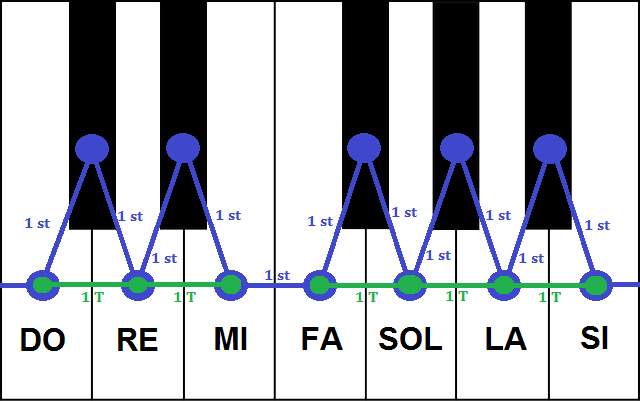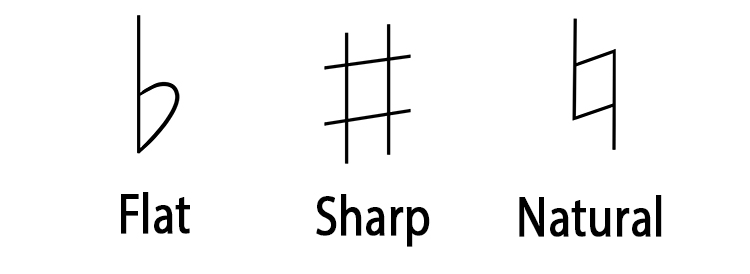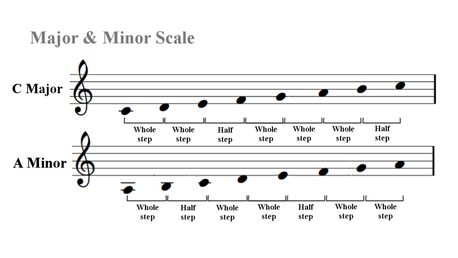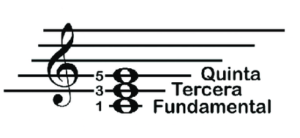MELODY AND HARMONY
In order for the composer to express his ideas through music, he has to choose and organize the different possibilities offered by sound. Sound is organized according to its two fundamental parameters, the vertical and horizontal axes.Both parameters are combined to create the main musical elements: melody, harmony and rhythm.
MELODY
Melody is a sequence of sounds with different pitches and durations that express a musical idea. All melodies are made within a certain organization of pitches of sound.
Structure of a melody
.
The same way we distinguish syllables, words, sentences, etc. in spoken language, melodies are also made up of small structures in the language of music. In a melody, we can distinguish:
Motif, which would be the equivalent of a word, is a small group of notes with musical meaning. It is the basic cell of the melody. The first movement of Beethoven’s 5th Symphony starts with this motif:
.
.
Phrase, which would be the equivalent of a grammatical sentence, is a melody with real meaning which ends in a cadence. A cadence is the equivalent of pauses in languages. Phrases are separated by cadences as linguistic phrases are separated by punctuation marks. A phrase will end with a weaker or stronger cadence depending on if it is an antecedent (when the musical idea is not finished) or consequent phrase (when the musical idea is finished).
.
Theme is the melody that becomes the core of a musical piece. It is the main idea around which the whole composition is built.
Intervals
.
An interval measures the distance between two notes. We obtain its name by counting the number of notes. The first and last note must be counted (and you must know the order of the musical notes to be able to count the notes). However, not all intervals of the same numerical classification are of the same size. That is why we need to specify the quality by finding the exact number of tones and semitones in the interval.
A semitone is the smallest interval used in tonal music. A good way to think about the semitone is that it is the very next note on a piano white or black; it is also known as a half step. A tone is two semitones; it can also be known as a whole step.
Accidentals
.
Accidentals are symbols that modify the pitch. The sharp (#) symbol raises a note by a half-step, while the flat (b) symbol lowers the note, also by a half-step. The natural cancels the effect of the sharp or the flat.
Scales
A scale is a series of notes that are ordered from low to high or vice versa. A scale is characterized by the number of sounds it is formed of (for example, the five sounds in a pentatonic scale) and the distances between them.
Most Western music is built upon the diatonic scales. Depending on the distribution of tones and semitones, diatonic scales can be major or minor. The major scale is generally ‘bright and happy’ in character while the minor scale is generally ‘dark and sad’. These are the more common ones:
Pentatonic scales are scales that use 5 notes. Pentatonic pieces have a very particular sonority. The pentatonic scale can be constructed by taking the 1st, 2nd, 3rd, 5th, and 6th note of a major or minor scale.
.
HARMONY
In Western Music, harmony is the use of different pitches simultaneously and often refers to the “vertical” aspects of music. This is different from ideas of melodic line, or the “horizontal” aspects. Three or more notes simultaneously sounded form a chord. We can feel different emotions when we hear a chord. Normally, we differentiate between consonance (relaxation) and dissonance (tension). Typically, a dissonant chord (chord with a tension) will become a consonant chord. A good harmonization usually sounds pleasant to the ear when there is a balance between the consonant and dissonant sounds. A good harmonization occurs when there is a balance between tense and relaxed moments. Due to this, tensions are usually prepared and then resolved.
.
.
Here is an example from Mikrokosmos by Bartok. The piece is called ‘Minor 2nds and Minor 7ths’. It uses a lot of dissonances. Many notes clash!
.
.
Cadences
.
The final chords at the end of a phrase or piece. Some of the basic types of cadences are:
.
PERFECT: Chord V to Chord I. The piece has a strong finish.
.
.
PLAGAL: Chord IV to Chord I. The piece has a strongish finish. Perfect is stronger.
.
.
IMPERFECT: A cadence that finishes on Chord V. It will not sound finished and want to have a Chord I following it.
.




